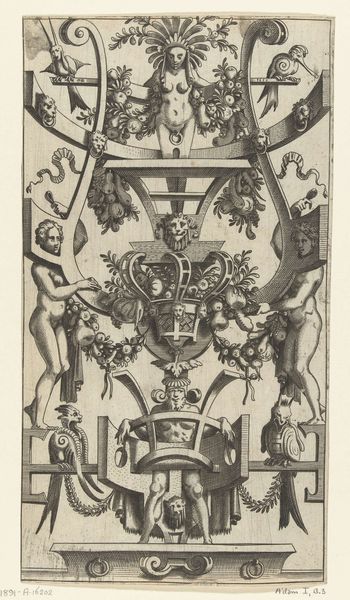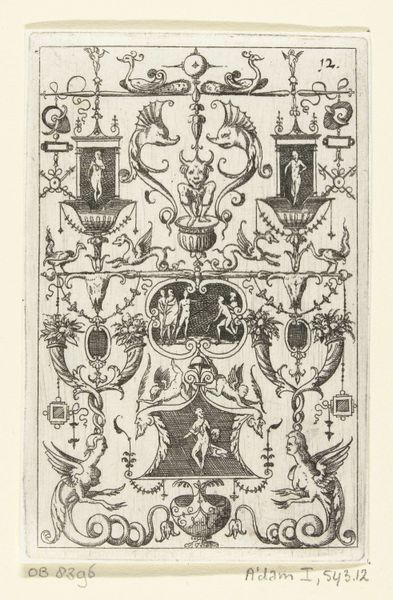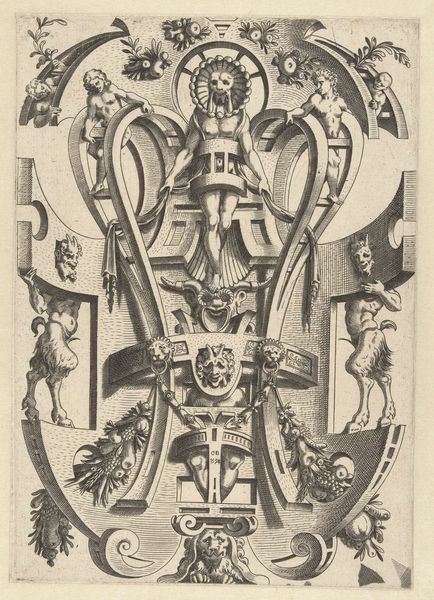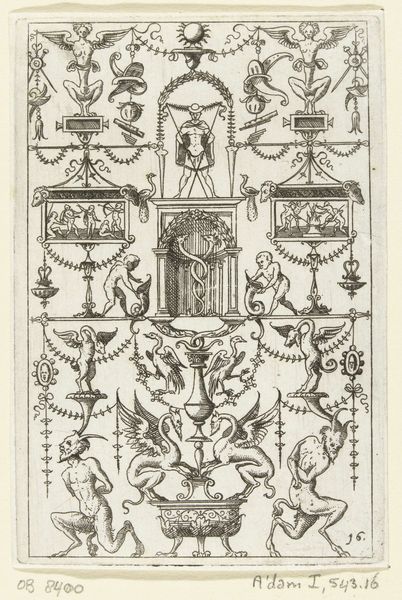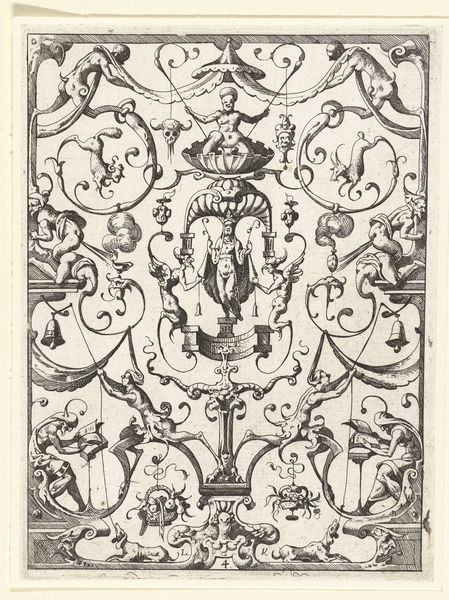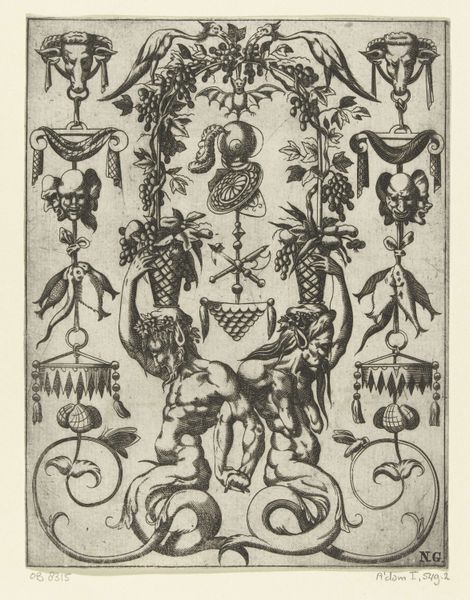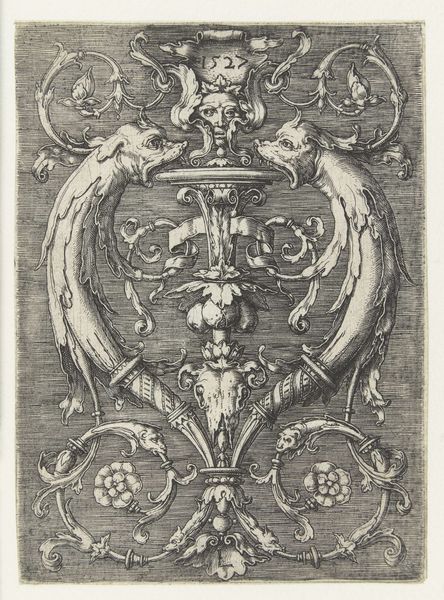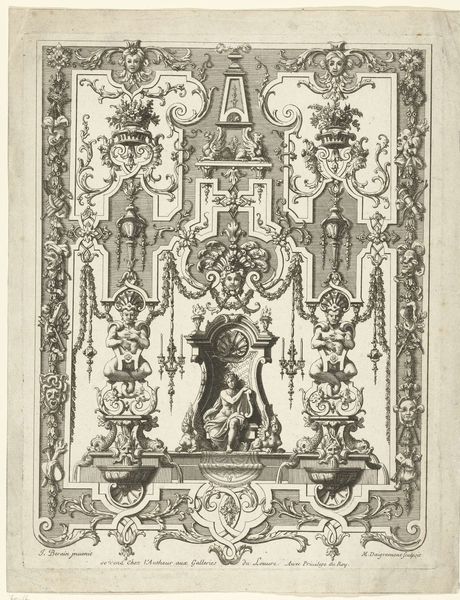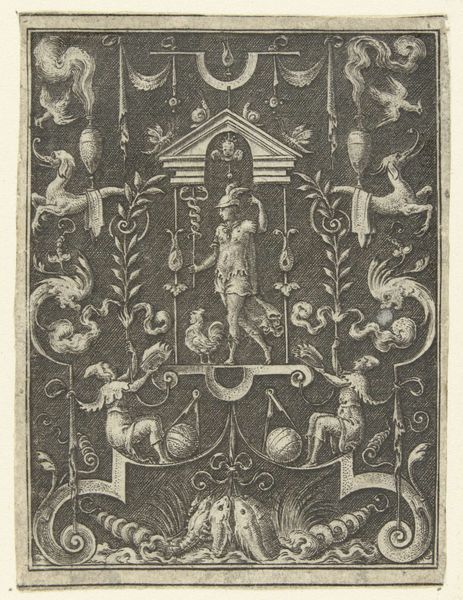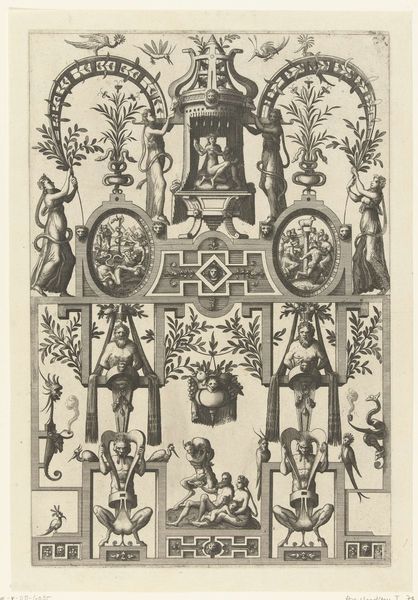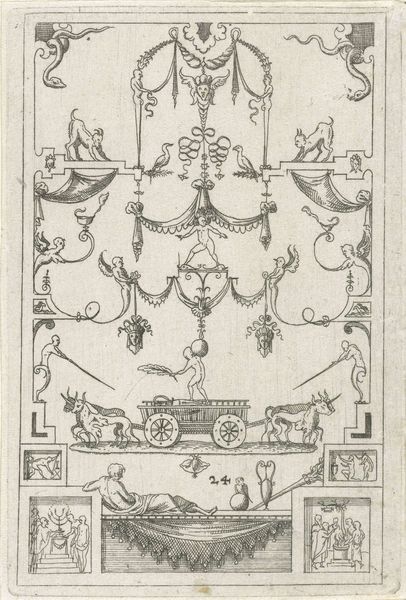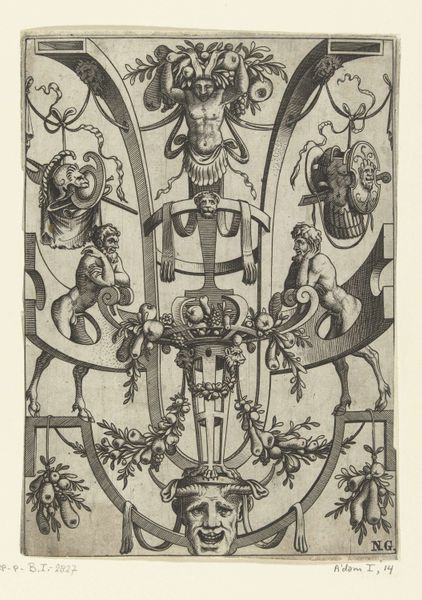
Vlakdecoratie met rolwerk, bovenaan hangt het wapen van het Lukasgilde 1556
0:00
0:00
anonymous
Rijksmuseum
graphic-art, print, metal, engraving
#
graphic-art
#
allegory
# print
#
metal
#
old engraving style
#
mannerism
#
figuration
#
northern-renaissance
#
decorative-art
#
engraving
Dimensions: height 239 mm, width 141 mm
Copyright: Rijks Museum: Open Domain
Curator: Welcome. We’re standing before a striking example of Northern Renaissance decorative art. This piece, entitled "Vlakdecoratie met rolwerk, bovenaan hangt het wapen van het Lukasgilde", translating to "Surface decoration with scrollwork, at the top hangs the coat of arms of the Guild of Saint Luke", dates back to 1556. Editor: Wow. Talk about busy! My first thought is, imagine having this pattern covering your walls! A little intense, but undeniably full of interesting detail—all those tiny figures nestled in the swirls and architectural bits. It's like a visual puzzle box. Curator: Precisely. This anonymous work employs engraving on metal and demonstrates the Mannerist style, which favored complexity and artifice over the classical ideals of balance that came before. The coat of arms references the Guild of Saint Luke, the professional organization for painters and other artists, signalling its intended audience and purpose. Editor: It almost feels like peering into someone’s fever dream! I see chubby cherubs, serious looking artisans, and classical figures all crammed together! The naked bodies are a trip. And is that… a demonic face at the bottom? Gives it a bit of an edge, doesn't it? Like beauty mixed with a wink of something darker. Curator: These elements are quite characteristic of the allegorical tradition common at the time. It's plausible those are not just "naked bodies" as you put it, but personifications of different aspects of artistic pursuit or perhaps of classical knowledge that artists aspired to attain, combined with various symbolic references to craft and artistic license. Editor: Interesting that these artists guild used pagan imagery alongside symbols of the craft. It suggests that for all their trade restrictions they embraced inspiration widely. The level of detail for practical use must mean its maker really knew their stuff. All that delicate scrollwork - painstaking. What kind of space would this even decorate, I wonder? A grand hall? The front of a printing press? Curator: That's a pertinent observation. It likely adorned architectural elements or perhaps was replicated on furniture, or even other craftworks associated with the arts—reinforcing the guild’s prestige. Prints like these also circulated as models, influencing other decorative arts. Editor: Seeing how art constantly reflects the society that births it always keeps me captivated. Like each piece contains a hidden code for people from different backgrounds to interpret through time! Looking at this work in the Rijksmuseum truly feels like getting an exciting glimpse of the cultural landscape, ideas, and passions of people from centuries ago! Curator: Agreed. It invites us to consider not just aesthetic preferences, but also the institutional framework, and socio-cultural world shaping its making and reception. It is fascinating to unpack all these interwoven layers of art making at the time.
Comments
No comments
Be the first to comment and join the conversation on the ultimate creative platform.
